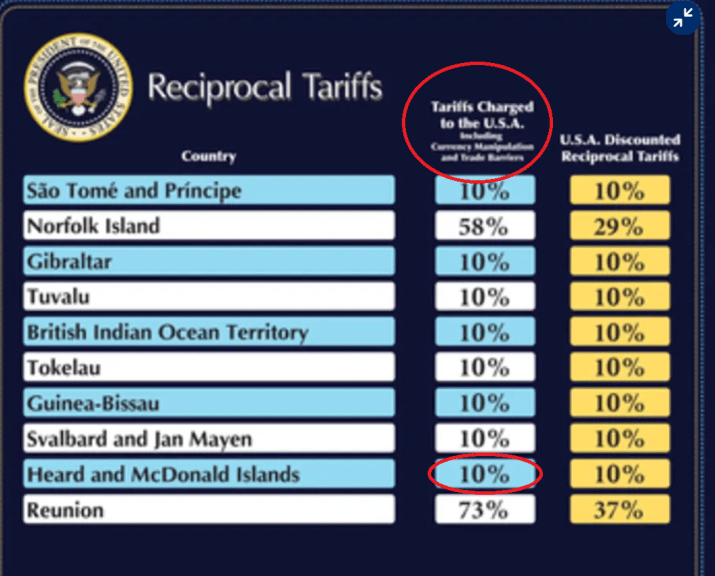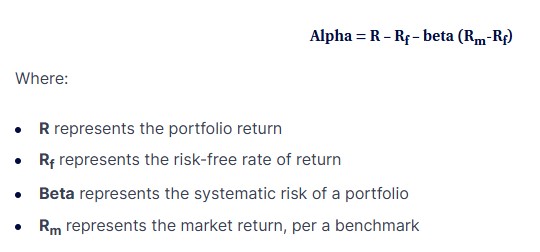Foreword
The world is ablaze with talk and speculation on Artificial Intelligence (AI), with untold billions of dollars poured into AI related companies.
As usual, a reminder that I am not a financial professional by training — I am a software engineer by training, and by trade. The following is based on my personal understanding, which is gained through self-study and working in finance for a few years.
If you find anything that you feel is incorrect, please feel free to leave a comment, and discuss your thoughts.
Words
Before we delve into the topic, a very brief history of AI and its related fields in the form of a mini glossary:
Artificial Intelligence (AI)
The term AI was originally used to mean intelligence that rivals that of the average human, and which was created by humans (i.e. not natural). The formal study of reasoning and how it can be applied via computer science began in the 1940’s, and over the decades, many have herald the imminent emergence of AI. Over the decades, many have been wrong about the imminent emergence of AI.
Machine Learning (ML)
ML is a term specific to computer science, and describes a field of study that encompasses many different technologies. ML is differentiated from AI in that while it aspires to human-level intelligence, it is mostly concerned with how to make machines (specifically computers) “smarter”, to learn and to improve.
Artificial Neural Network (ANN)
ANNs are an application of ML, i.e. a technology created as part of the study of ML. First invented in the 1970’s, ANN seeks to mimic the human brain by defining computing nodes akin to human neurons. These “neurons” are then connected to each other via a hierarchical layer structure. Each “neuron” operate independently of the others in the same layer, and all “neurons” in the same layer get input either directly or transitively from “neurons” of prior layers, with the final “neuron(s)” being the output of the entire network.
ANNs, and a close cousin Hidden Markov Models (HMMs), have been used very successfully over the decades in various applications, providing impressive results.
There are various specializations of ANNs, such as Deep Neural Networks (DNNs, aka Deep Learning), Convolutional Neural Networks (CNNs) and Recurrent Neural Networks (RNNs), with each preferred for their own niches of ML.
Large Language Model (LLM)
Large Language Models (LLMs) encapsulate many of the features of the above, and a lot more not discussed, and have been extremely successful in producing almost human-levels of prose. Recent (circa 2023) developments in LLMs have resulted in the ability to generate not just text, but also other contents such as graphics and video. These latest developments are coined Large Multimodal Models (LMMs), and today, the terms LLM and LMM both generally refer to the latter.
The simplest (and somewhat crude) way of describing a LLM is that it is a statistical prediction model — given a stream of input such as words, what would be the most likely output (such as words of a prose, or pixels in a picture).
Grade inflation
Today, the term AI is used interchangeably with ML, or more specifically LLMs. This is despite the fact that most practitioners agree LLMs are not quite on par with human-level intelligence. To differentiate human-level intelligence and what LLMs are capable of today, a new term Artificial General Intelligence (AGI) was coined to refer to what AI used to mean.
I’m more of a traditionalist when it comes to definitions, and am not a fan of this marketing gibberish and rampant grade inflation, so for the rest of this post, I will be using AI to mean the original definition above.
State of the art
As mentioned above, as of this article, LLMs are extremely capable of producing prose and visual content that is at almost human level. In particular, many have found great success with using LLMs to produce code (also called Vibe Coding), where the user uses spoken English as input to the LLM in order to get it to produce (hopefully) useful source code, such as in C++ or Python.
However, as LLMs are not really thinking models, but rather statistical prediction models, they are prone to errors, sometimes called hallucinations. Nobody really understands what causes hallucinations or what they mean, but my personal take is that it is an artefact of the LLM being fed inputs that it simply hasn’t encountered in training before, and in such a way that its interpolation or extrapolation of the input results in output that is simply garbage.
There are techniques to working around hallucinations, such as feeding the output back into the LLM and asking it to rework or rethink through its response, effectively a mulligan. However, this is generally only applicable when the user can recognize that the output is wrong — if the user simply does not have the ability to evaluate the correctness of the output, then chances are the user will just end up believing the garbage.
Practical concerns
Despite the hype of the imminent emergence of AI, I am less optimistic. But even without AI, ML (and LLMs) can be of practical use. There are many areas where it is fairly easy for the user to verify the correctness of LLM output, such as when vibe coding (if the code compiles, and if the code does what the user wants), prose generation (user can read the prose) and graphics/video generation (look and see!), and in these respects, LLMs have proven to be huge time savers and productivity boosters.
Central to these use cases is the cost benefits analysis — if it is more cost effective to have a human produce the content, then it doesn’t make sense to have LLMs do it. Today, the cost to end-users of using LLMs is pretty cheap, with pricing around single to low double digit dollars per million tokens, where you can think of a token as somewhat like a “sub word” (some words cost one token, others may cost more). With the Lord of the Rings trilogy being less than 500k words, a million tokens is plenty!
And this is where hallucinations come in. The problem with the above paragraph is that while in the ideal scenario, you can almost produce the Lord of the Rings trilogy with a million tokens (~$10!), the reality is that you’ll likely end up with garbage — hallucinations tend to creep in pretty quickly, and without constant human supervision to read the output and force the LLM to redo/rework parts of the output, it simply won’t be very good.
In the end, in order to produce 500k words of actually useful and entertaining prose, the user may end up spending many millions of tokens, with most of them wasted due to hallucinations. More importantly, a lot of human time will be consumed reviewing and effectively redoing the LLM’s work.
Whether this is worth it depends a lot on the project at hand and the user’s circumstances. As an example, for someone who is not trained in computer science, being able to just produce any code would be a huge win. But for a trained and seasoned software engineer, the benefits can be much more dubious, especially when you are considering mission critical code where subtle bugs and security implications are not obvious and the inexperienced will simply not be able to even realize these issues need more thought/work.
My take
My personal take is that as things stand, LLMs are not going to lead to AI, absent dramatic changes to the fundamental basis of LLMs, such that whatever comes out will not look very much like the LLMs of today.
At their core, LLMs and all other related statistical prediction models are generally very good at predicting the “next thing given a series of things”, but are pretty terrible at innovation and making decisions based on novel situations — both critical components of intelligence as most would understand the word. Recall from the examples above, that a human supervisor is still needed to ensure correct output!
In my opinion, LLMs may very well form parts of AI, if and when it emerges, but won’t be the whole. Instead, I have been toying with the idea of a “meta model” — essentially a “thinking” and “decision making” layer on top of a bunch of other “doing” models.
For example, the “meta model” may decide that “for the problem at hand, we need to generate an essay about AI”, and hand the task off to a “doing” model that is based on an LLM. Or it may decide that in order to generate that essay, the LLM needs to be supervised by a more generalized RNN model that researches the output of the LLM to validate correctness in an iterative process — in this case, the RNN model, possibly with aid from the “meta model” will do the work of what the human supervision would be doing today.
This paradigm has benefits — the “doing” models can be specialized to various tasks for which they are best suited. Many tasks required of humans can be easily graded as “right” or “wrong”, and it is in these well defined problem spaces that LLMs thrive. Building bespoke models tailored to specific tasks has, historically, been an extremely successful approach in ML.
What, then, would be used to build this “meta model”? Honestly, I have no idea. If I were to guess, it’d be some hybrid of HMMs and ANNs. HMMs are good at predicting things based on internal, unobservable states and ANNs are good at predicting things based on historical correlations. But that’s just me.
Finance
What does any of the above have to do with finance? This is, after all, a finance blog! Well, a lot.
There are many avenues to invest in LLMs, from NVidia stock (still the gold standard of GPU chips, a critical component of building and running LLMs), to private investments in various LLM startups, to datacenter providers (GPUs need to be put somewhere), to hyperscalers that provide a more hands-off approach to dealing with the hardware.
The key to remember is that as of today, no LLM startup is profitable — all of them are burning money like there’s no tomorrow. Even more concerning, many businesses renting out the hardware for building and running LLMs are arguably in the red, with dubious progress toward profitability. Pretty much the only companies reaping outsized profits in this space are NVidia, and a handful of smaller energy and component suppliers. Actually running the hardware or LLMs has been extremely disappointing from a PnL perspective, despite the huge amounts of investments made.
No hope?
That’s not to say that there’s no hope. With enough research, it might be possible to pivot an LLM startup to actual profitable use, for example by focusing in a vertical where LLMs are particularly suited.
Also, somewhat more cynically, speculating in LLM companies can be profitable for investors if the companies get acquihired by larger players not so much for their products, but for their human talents, in a giant game of greater fools.
It is somewhat ironic that in the business of AI, the most valuable products thus far appear to be the humans.
Weekend video binge
To end, a trio of videos from notable people in the field discussing AI and LLMs. Enjoy!




